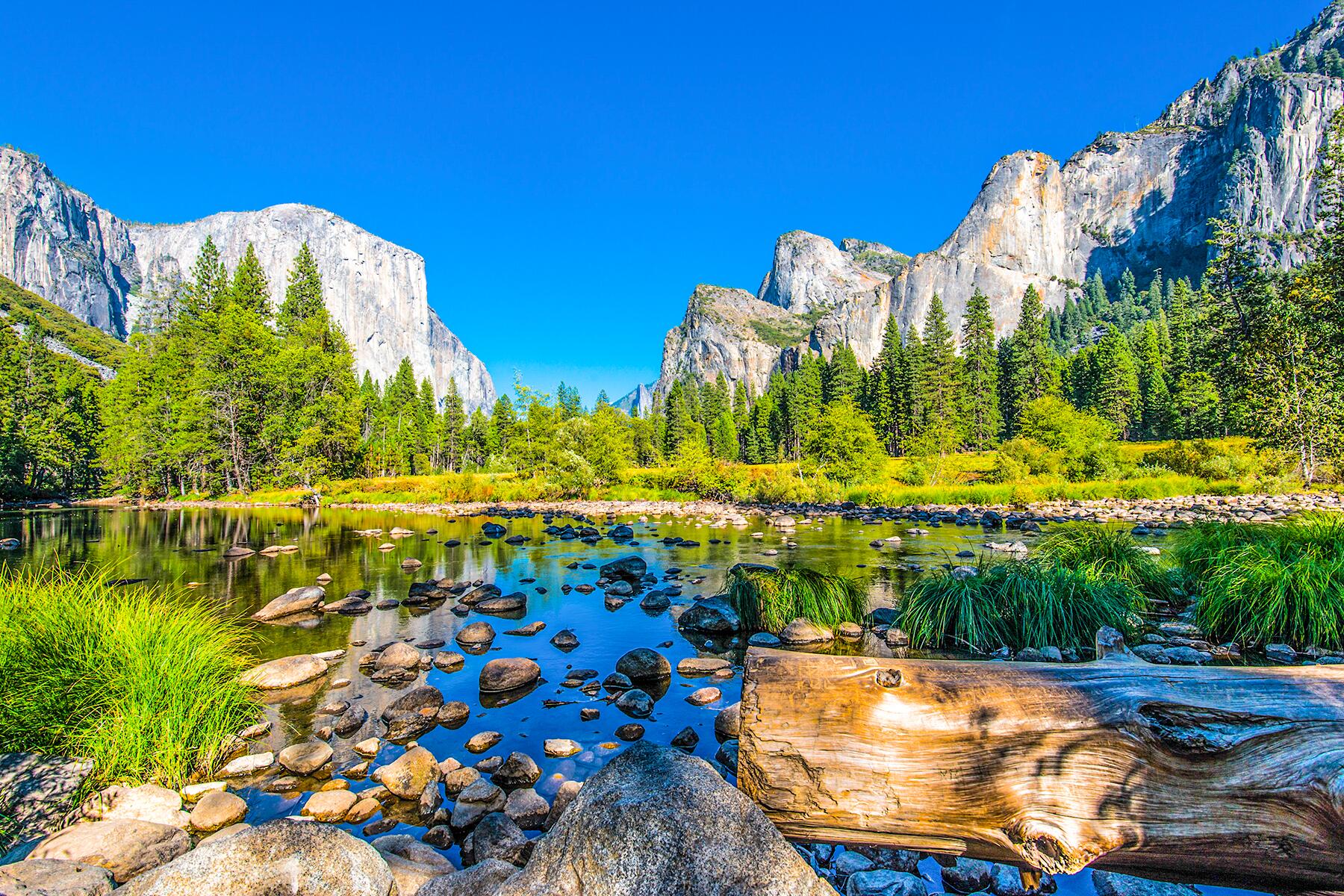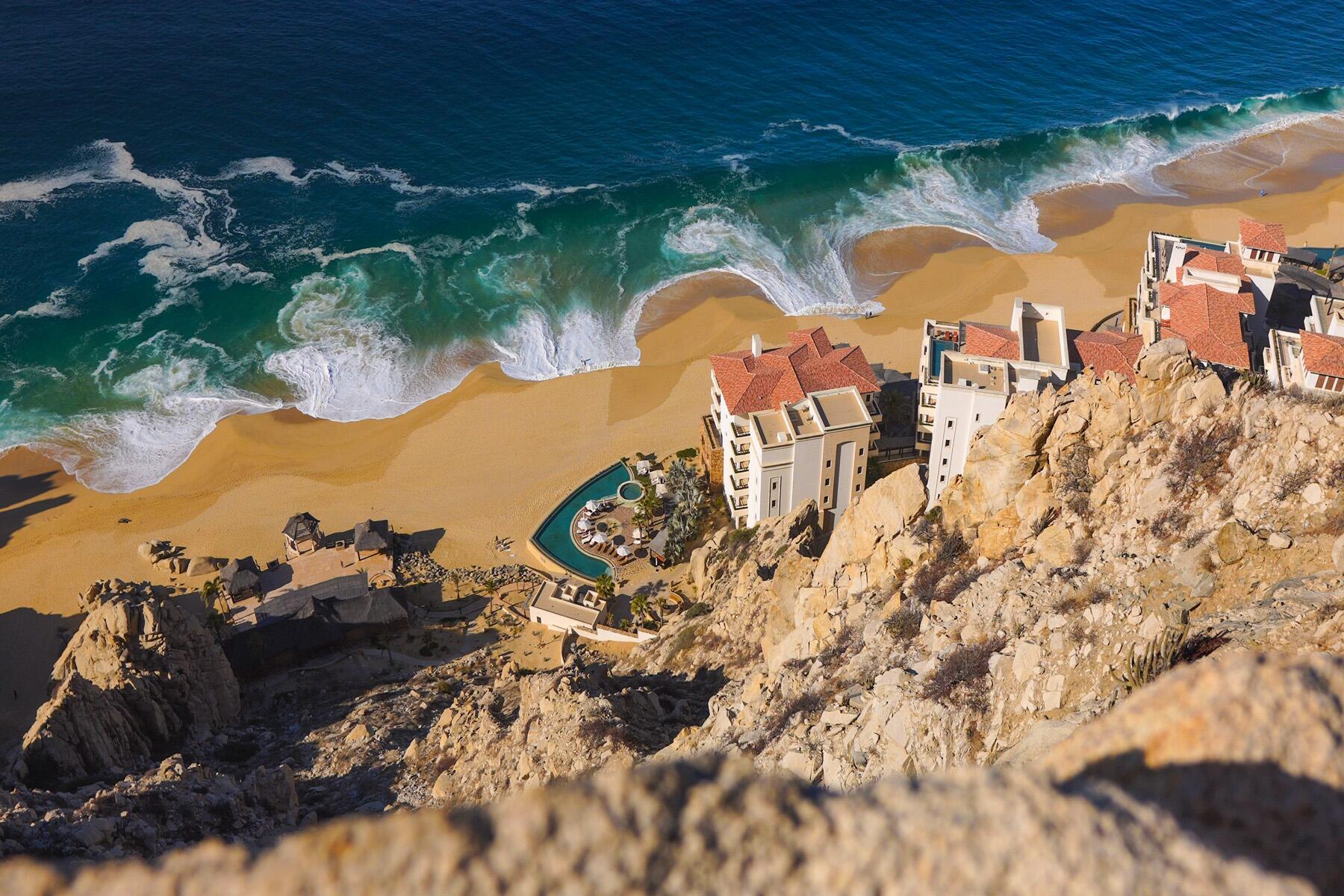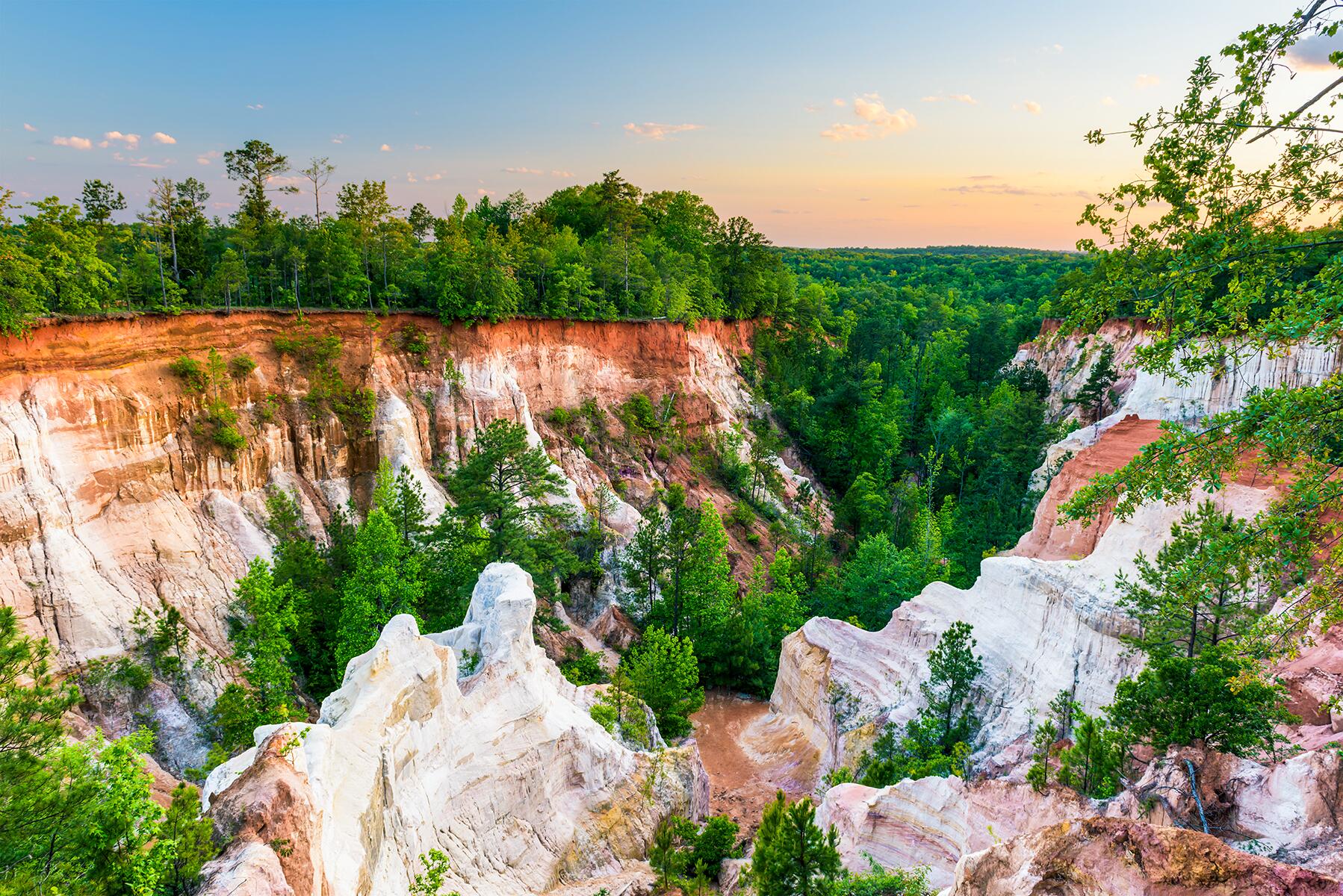Who says you have to go to Arizona for canyon views?
If this past year has you craving fresh air and a change of scenery, you’re not alone. It’s what has inspired droves of U.S. travelers to visit national parks like the Grand Canyon. But if you can’t travel there safely just yet, or prefer to avoid crowds, here’s a little secret: there’s a mini version—a secluded version—in the South. Tucked away in Georgia, Providence Canyon State Park, dubbed the state’s “Little Grand Canyon” for its red rock canyons, is within driving distance from many Southern cities and well worth a day of hiking. And with wide-open spaces and few visitors, it’s a relatively low-risk destination (though check state and local information before heading out). Here’s everything you need to know to plan a hiking adventure into the great outdoors—somewhere new, finally.
Where Is It?
Providence Canyon State Park is located in the little town of Lumpkin, Georgia, a two-hour-and-30-minute drive from Atlanta via I-85 S, a 4-hour drive from Savannah via I-16 W, and a 45-minute drive from Columbus. Tallahassee, Florida’s capital, is only two hours away. Its proximity to these towns makes it a good day trip or stop on a road trip through the South. Plug this address into your navigation: 8930 Canyon Rd., Lumpkin GA 31815. Whatever your route, you’ll roll down quiet Canyon Rd. to the park entrance, feeling you’ve uncovered a hidden gem at every turn.
Recommended Fodor’s Video
What Is It?
The 1,000-acre park has 16 canyons layered in red rock of at least 43 shades, from deep ruby to peach. Ten miles of hiking loops in the park allow access to the canyons, many of which you can walk through. There are two main trails. The most popular for day-trippers, the Canyon Loop Trail, is blazed with white markers and is a 2.5-mile loop starting at the Visitor Center. The easy hike allows access to canyons one through nine, which are marked with signposts. If you choose to hike the canyons, note that the climb is steep and rough.
INSIDER TIPIf you’re short on time, prioritize canyons four and five as they offer the best climb and backdrop for photos. While you’re up there, don’t mark the canyons, touch the walls, or remove any rocks.
Those staying the night in the campgrounds here may wish to tackle the longer, red-blazed Backcountry Trail. The seven-mile loop requires at least six hours and is more difficult. If you’re not able to hike but still want to take in the geological formations, there are plenty of overlooks by the parking lot and Visitor’s Center that afford a birds-eye view. And—exhale!
INSIDER TIPWear shoes you don’t mind getting wet, since you’ll likely traverse shallow, muddy streams, and wear clothes you don’t mind getting stained with red clay. If you climb the canyons, you will probably fall on your Georgia peach a time or two.
How Does It Stack up to the Grand Canyon?
Let’s get one thing straight: nothing compares to the real thing. No other canyon in the U.S. has the awesome scale, the panoramic views, or the ability to make you feel like a floating speck in the universe. That’s probably why it’s attracted almost 6 million visitors per year pre-pandemic. But all those people are exactly why we needed to find an alternative. Providence is much smaller than the Grand Canyon, so as long as you keep that in mind you won’t be disappointed. Unlike Arizona’s canyons, Providence is surrounded by trees, and its shady forest setting is what makes even summer visits temperate.
How Did It Get Here?
While fascinating and beautiful, the canyons contain a lesson. The formations were created not by natural forces but poor farming practices in the 1800s which destroyed and eroded the land. We got a state park out of it, sure, but these staggering canyons are a sobering reminder of the toll human interference can take on our environment.
When to Go
Go on a weekday and you’ll likely encounter only a handful of people—enough to maintain six feet of distance and then some. The park entrance is open year-round, from 7 a.m. until 6 p.m. from September to April, and until 9 p.m. the rest of the year but is particularly pleasant when temperatures cool in the fall.
INSIDER TIPTake your pet with you! Dogs are allowed on all of the trails, as long as they’re on a six-foot leash.
Where to Eat
We recommend packing snacks for your hike to combat hangriness, as it’s a good 30-minute drive to the nearest restaurant. There are mostly fast-food chains on the way, but one good option when heading from Columbus, Georgia, is cheap and delicious Country’s Barbecue.
Where to Stay
If you’re driving from far away or just want to dedicate more than a day to the trails, reserve a campsite in the park online via the Georgia Department of Natural Resources. There are three Pioneer sites right off the longer loop and six backcountry sites that will allow you to explore deeper wilderness at a more leisurely pace. Each site has two picnic tables and a grill but no restroom facilities except a pit (come on, you can rough it! Plus, no elevator buttons to Lysol) and pets are allowed. The fee is around $40 per night, but check the website for availability and rates.
What Does It Cost?
The entry fee per car is $5, which you can drop in an envelope on arrival—no contact necessary. The annual pass is $50; campsites are an additional fee. It’s a small price to pay for renewing the spirit—probably the best $5 we spent on travel this year.



